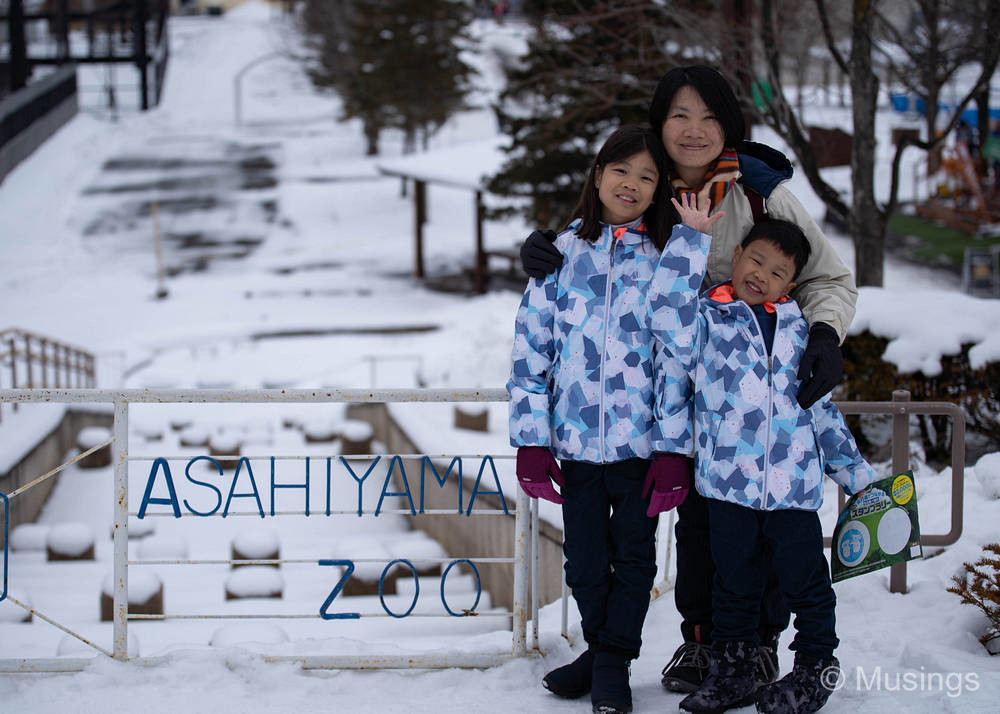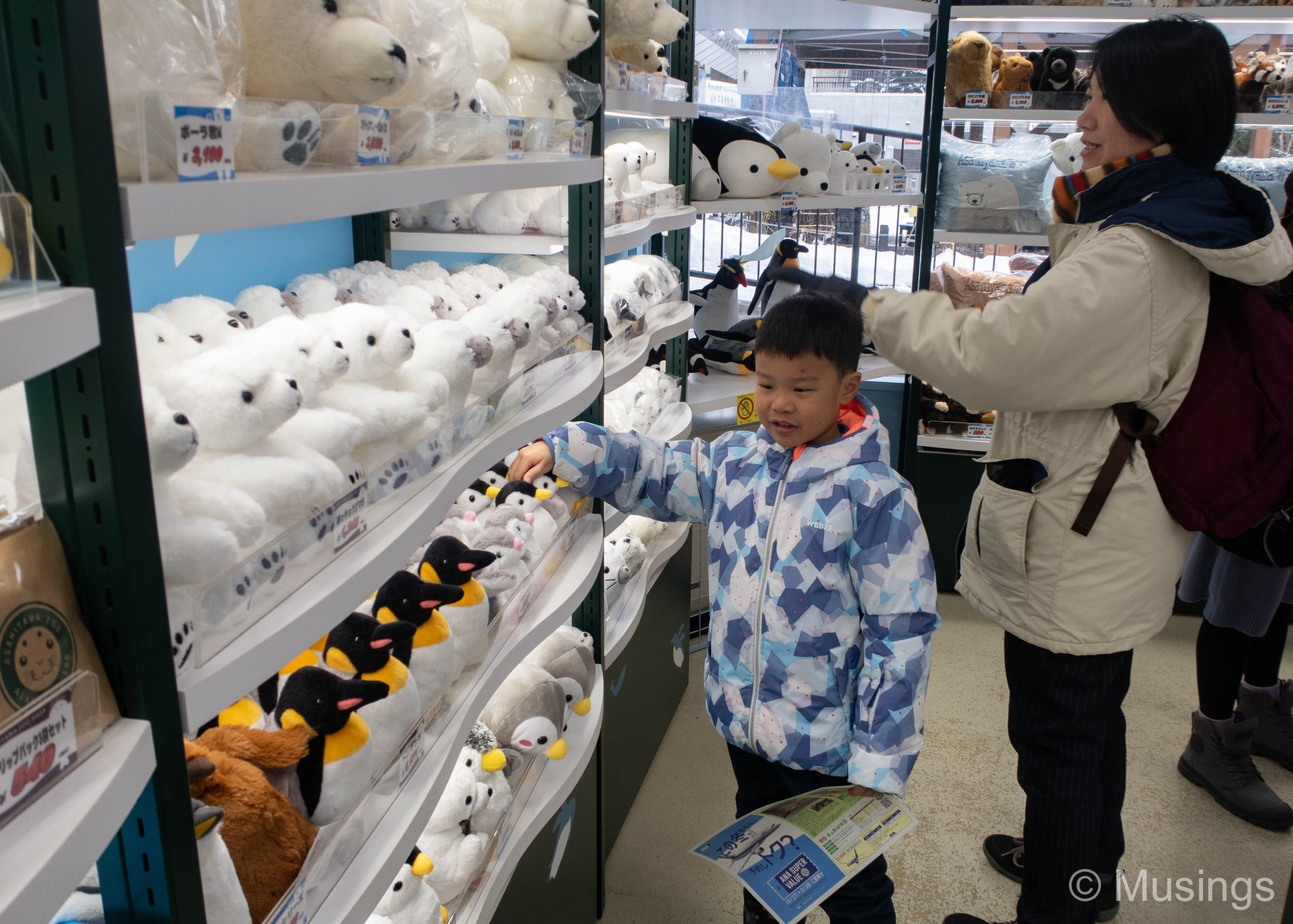We booked for two day outings this trip – one to Asahikawa, and the other to Lakes Toya and Shikotsu. Sure, the places are fairly on the map and well-traveled to places for both of these day trip days, and we could have rented a car to drive around. However, neither of us have driven in snow conditions before – and with kids and our collective general inability to speak Japanese, we decided at the start to just go with groups for these visits to the central part of Hokkaido.
Asahiyama Zoo is a zoo that just celebrated its 50 years anniversary, and is regarded as among the most well-known, publicised and also popular by visitation numbers zoos in Japan. The collection of species isn’t expansive as the zoo, nor is the area it covers nearly as large as the Singapore Zoological Gardens. What it has however is its unique setting: that 3-4 months a year the zoo is blanketed in snow, and that the winter animals really come out to play and be alive during this season.
Other brief comments:
The zoo in winter opens only at 10:30AM, though visitor groups from tour buses are permitted to start queuing earlier. Thanks in no small part to the strict keeping to time regime put in by our day’s tour leader, we were the first tour group in when the gates opened.
In this tour, exactly two hours were allocated to the zoo – and that, frankly, is just only enough time if you’re darting from enclosure to enclosure to see the key bits. In fact, the general consensus among the visitors in our bus was that the zoo was impressive, but there just wasn’t enough time to check out all the enclosures and give each the attention it deserves. The demonstration events – e.g. penguin feeding – was so crowded that we gave up trying to watch the events, and instead used these small pockets of time to see other species. Particularly disappointing too was that the penguins would not be doing their famous walk through the southerly part of the area as the snow layers still aren’t thick enough at this point of the year.
The zoo is built on a slope. It doesn’t matter which of the two gates you’re arriving at – you’d be both climbing up and also down to cover the entire zoo. The gate determines though which of those two direction you begin with. In our case, our bus dropped us off at the East Gate which is at the top of the slope, so our exploration was downhill first.
I reckon that the zoo could also use some refurbishment. Oh, the grounds were clean – a consequence of the Japanese culture of not having trash bins everywhere, so you have to bring your rubbish on your person until you get to designated spots to dispose of it. I thought the enclosures were largely of the older design, with some use of reinforced glass and a lot of steel bars. Some of the enclosures were open-zoo concept, that of the red panda, reindeer and polar bear – but others need not had been, e.g. ostrich.
The zoo is also seasonal: i.e. selected enclosures will be closed depending on the time of the year as the animals would be hibernating. If we’re visiting Hokkaido again during spring or summer, I doubt we’d want to visit this zoo again though since the animals in a hot and humid season like summer wouldn’t be very different from what we see in the tropics.


Continued in the next post with portrait shots of the zoo’s residents will be in a following post!
Recent comments